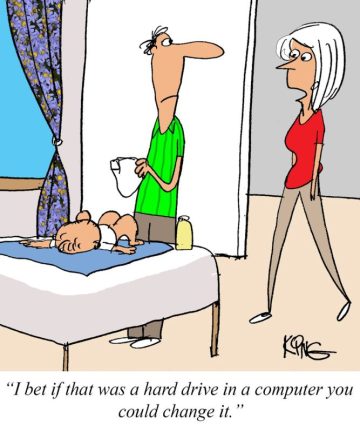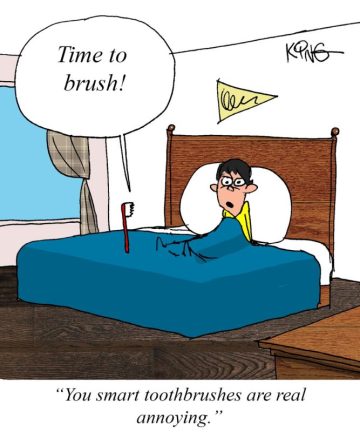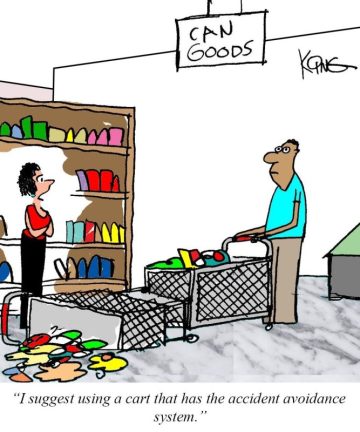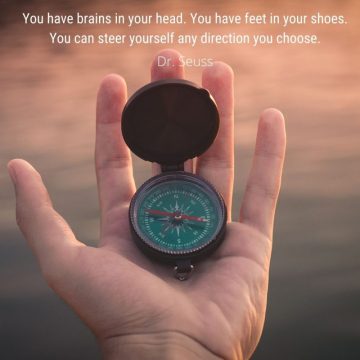Health
What are the risk factors for prostate cancer?
September is National Prostate Cancer Awareness Month, which makes it an ideal time to learn more about this disease and speak with your doctor about it, especially if you’re a man over the age of 50. Here are several factors that can increase your risk of developing this type of cancer:
• Age. Approximately 60 percent of prostate cancer cases are diagnosed in men 65 and older.
• Family history. Men may be at a higher risk if a close relative was diagnosed with the disease before the age of 65.
• Weight. Men who are overweight are more likely to be diagnosed with an advanced stage of prostate cancer.
• Height. Some studies have found a link between being tall and having an increased risk of developing this type of cancer.
• Excess calcium. A diet that’s high in dairy products and other calcium-rich foods may increase the risk of prostate cancer.
• Genetic mutations. Inherited mutations of two genes, BRCA1 and BRCA2, have been associated with this type of cancer.
Other risk factors include smoking cigarettes, handling certain chemicals, and having high levels of androgens or inflammation of the prostate gland.
PSA test
The American Cancer Society recommends that men undergo prostate-specific antigen (PSA) tests starting at age 50, or sooner if they’re at a high risk of developing prostate cancer. This blood test can help detect the disease in its early stages before symptoms appear. Talk to your doctor about whether it’s right for you.
To learn more about this disease, visit cancer.org.
For unknown reasons, prostate cancer is more common among men of African descent than it is among other groups, and they’re more likely to die of the disease too.
Health
The Hidden Dangers of Ultra-Processed Foods: A Global Health Alert
In a groundbreaking study that has caught the attention of nutritionists and health enthusiasts worldwide, new research highlights the significant risks associated with the consumption of ultra-processed foods. These foods, characterized by their use of artificial flavors, colors, thickeners, and other chemical additives, have been linked to an alarming array of health conditions.
Conducted by researchers at Australia’s Deakin University, the study compiled data from over 10 million participants across 45 meta-analyses. The findings revealed a stark correlation between the consumption of ultra-processed foods and the prevalence of several adverse health conditions. More than 70% of individuals suffering from heart disease, obesity, and diabetes had diets high in ultra-processed foods.
This extensive research sheds light on dietary choices’ profound impact on our health. Ultra-processed foods, often marketed for convenience and long shelf life, are now scrutinized for their potential to undermine health and well-being. The study’s implications extend beyond individual health concerns, pointing to a broader public health issue that demands attention.
The link between ultra-processed foods and a host of health conditions underscores the importance of making informed dietary choices. As the global community grapples with increasing rates of chronic diseases, this research serves as a call to action for individuals, policymakers, and the food industry to promote and facilitate healthier eating habits.
Health
Urgent Health Alert: The Hidden Dangers of Microplastics for Babies and Infants
As Earth Day approaches on April 22, this year’s theme, “Planet vs. Plastics,” casts a spotlight on a pressing environmental and health crisis: the pervasive threat of plastics and microplastics. While the conversation around plastic pollution often focuses on its environmental impact, a crucial and deeply concerning aspect of this crisis is its effect on human health, particularly on our most vulnerable population—babies and infants.
An alarming new report titled “Babies vs. Plastics,” released in conjunction with Earth Day, sheds light on the grave risks that plastics and microplastics pose to young children. The findings underscore the urgent need for further research and action to protect our youngest generations from these invisible threats.
Disturbing Findings from the “Babies vs. Plastics” Report
- Increased Ingestion by Infants: Infants are at a higher risk of microplastic exposure compared to adults. Their natural behaviors, such as crawling, teething, and the tendency to explore the world through their mouths, lead to up to 10 times more ingestion of microplastics and microfibers. Common sources include plastic toys, textiles, and even playground surfaces made from recycled tires.
- Accumulation in Vital Organs: There’s growing scientific evidence that microplastics don’t just pass through the body harmlessly. Instead, they accumulate in critical organs, including the brain, posing unknown long-term health risks.
- Early Exposure: Shockingly, researchers have found microplastics in the human placenta, indicating that exposure begins before birth, during crucial stages of development.
- Links to Health Issues: The presence of microplastics and their associated chemicals in the human body has been connected to severe health outcomes, including increased rates of miscarriage and male infertility.
- Contamination of Essential Nutrients: Microplastics have been detected in dairy products and breast milk, raising alarms about the exposure of infants to these particles through vital sources of nutrition.
- Higher Risk Indoors: The report also highlights that indoor air is more heavily contaminated with microplastics than outdoor air, exacerbating exposure risks for infants who spend the majority of their time indoors.
This Earth Day, the call to action is clear: we must address the plastic pollution crisis to preserve our planet and protect the health of our youngest and most vulnerable. The “Planet vs. Plastics” theme emphasizes the critical need to phase out single-use plastics and tackle the root causes of plastic pollution.
As communities worldwide reflect on how to combat this growing threat, it’s crucial to support initiatives to reduce plastic use and increase research into its health impacts. Our children’s health and our ecosystems’ integrity depend on it. For more information on


The baby boy bites toy block on a bed at home
how to contribute to the fight against plastic pollution, visit earthday.org.
Health
Understanding Local Anesthesia: Your Guide to a Pain-Free Dental Visit
Are you gearing up for a dental appointment and concerned about potential discomfort? Local anesthesia is here to make your experience as pain-free as possible. Let’s break down the essentials of local anesthesia into three easy-to-understand questions so you know exactly what to expect and feel more at ease.
1. What Exactly Is Local Anesthetic?
Local anesthesia is a medication used during dental procedures to numb a specific area of your mouth, ensuring you don’t feel any pain while the dentist works on your teeth. This differs from general anesthesia, which puts you in deep sleep. Local anesthesia allows you to stay awake and alert, minus the discomfort, making it a preferred option for various dental treatments.
2. How Does Local Anesthetic Work?
Local anesthesia can be applied in two forms: topical and injectable.
- Topical Anesthesia: This is usually the first step, where a dentist applies an anesthetic gel to your gums or inner cheek using a cotton swab. It numbs the surface, making the subsequent injection less noticeable.
- Injection Anesthesia: For more profound numbness, a dentist will use a needle to inject an anesthetic directly into the gum tissue surrounding the area being treated. This blocks the nerves from sending pain signals to your brain, effectively numbing the region for the duration of your procedure, which can range from one to several hours.
Both methods aim to ensure a painless experience by targeting the nerves responsible for pain sensation.
3. What About Side Effects?
Local anesthesia is widely regarded as safe, with minimal side effects. After the procedure, you might experience some temporary swelling, bruising where the injection was given, or extended numbness beyond the treated area. These side effects are generally mild and fade within a few hours.
To ensure the best outcomes and minimize risks, it’s crucial to inform your dentist about any medications you’re taking, allergies, existing heart conditions, or if you’re pregnant. This allows them to choose the most appropriate anesthetic and avoid complications.
Local anesthesia is versatile, used for routine cleanings and more involved procedures like wisdom tooth extraction. If dental appointments make you anxious, talk to your dentist about options like conscious sedation, which can help ease your nerves while keeping you awake and responsive.
Health
Spring Allergy Relief: Natural and Medical Solutions for Seasonal Sniffles
As the beauty of spring unfurls, so does the plight of allergy sufferers. Often referred to as rose fever, hay fever, or allergic rhinitis, this seasonal challenge affects approximately 50 million people in the United States alone. The good news? There’s a myriad of ways to combat these pesky symptoms, ranging from medical interventions to natural remedies.
Medical Interventions: Antihistamines, or histamine blockers as some know them, are the frontline defense against allergy symptoms. These medications can be obtained over-the-counter or via prescription, depending on your specific needs and the severity of your allergies. Additionally, antileukotrienes, a class of drugs targeting the lungs’ response to allergens, play a crucial role in preventing the swelling of airways, effectively warding off both allergy and asthma attacks.
Natural Prevention Techniques: Knowledge is power, especially when it comes to allergies. Identifying and avoiding your triggers is key. Monitoring mold and pollen, forecasts can help you plan your outdoor activities or opt for protective measures like wearing a paper mask on days with high allergen levels. Researchers at the Woodcock Institute of Medical Research in Australia recommend inexpensive pollen filters that fit over the nose and mouth to significantly reduce allergen exposure.
The Power of Green Tea: Emerging as a formidable ally in the fight against allergies, green tea harbors a super antioxidant capable of blocking the biochemical process that leads to allergic responses. This revelation from the Journal of Agricultural and Food Chemistry suggests that green tea could be effective against a broad spectrum of allergens, including pollen, pet dander, and dust. Lester Mitscher of the University of Kansas, author of The Green Tea Book: China’s Fountain of Youth, recommends consuming two to three cups daily to enhance the body’s defense mechanisms against allergies. For the best results, fresh tea made from loose leaves is preferable to tea bags, and distilled water is recommended over chlorinated water to preserve antioxidant levels.
With these medical and natural strategies, spring no longer has to be synonymous with discomfort for allergy sufferers. Whether through carefully selecting medications or integrating green tea into your daily routine, relief is within reach.
Health
Boost Your Health with Strength Training: A Must-Add to Your Exercise Routine
In today’s fast-paced world, staying active is key to maintaining good health. However, a significant portion of Americans overlook an essential component of fitness: strength training. The U.S. Centers for Disease Control and Prevention (CDC) underscores the importance of incorporating muscle-strengthening activities into our weekly routines. Alongside 150 minutes of moderate aerobic activity, the CDC recommends adults engage in strength training exercises at least twice a week. This advice extends to everyone, including older adults and individuals with chronic conditions or disabilities.
The benefits of integrating strength training into your exercise regimen are manifold:
- Weight Management: Strength training is pivotal in preserving and building lean muscle mass, which in turn boosts metabolism. This metabolic uptick aids in weight management or loss and is linked to improved insulin sensitivity.
- Bone Health: Resistance training and weight-bearing exercises are beneficial for maintaining healthy bone density and significantly reducing the risk of osteoporosis.
- Enhanced Quality of Life: Muscle-strengthening activities make daily tasks easier, from climbing stairs to lifting heavy objects, thus improving overall physical function. For older adults, strength training is particularly effective in fall prevention.
- Chronic Condition Management: Individuals suffering from chronic conditions such as obesity, arthritis, depression, or diabetes can greatly benefit from regular strength training.
Starting Your Strength Training Journey: Starting a strength training journey doesn’t have to be daunting or expensive. No equipment is necessary, and you can begin at home in comfortable attire. Start with three to five simple exercises like squats, wall push-ups, glute bridges, and step-ups. Aim for two to three sets of eight to 12 repetitions, resting for about a minute between sets. Remember, getting your doctor’s approval before starting any new exercise program is crucial, especially if you have existing health conditions.
Incorporating strength training into your routine is not just about building muscles but a healthier, more resilient you. So why not start today?
Health
Restoring Your Smile: Solutions for Missing Teeth
Have you noticed a gap in your smile because of missing teeth? This isn’t just about looks; not replacing a missing tooth can lead to all sorts of troubles, like making it hard to enjoy your favorite foods, causing problems with how you talk, pain in your jaw, and even making your other teeth move around in ways they shouldn’t. But don’t worry, you can bring back your smile and keep those problems at bay in several ways.
One great way to replace a missing tooth is with something called an implant-supported crown. This involves putting a fake root, kind of like a screw, right into your jawbone and then placing a crown on top that looks just like a real tooth. It’s sturdy and looks great, making it perfect for filling in that empty spot.
You might want to think about an implant-supported prosthesis if you’re missing more than one tooth. It’s similar to the crown option but needs several implants (usually four to six) to replace a bunch of teeth or even all of them in your upper or lower jaw. This is a super durable choice meant to last a long time.
Another option is a bridge. This isn’t something you walk over; it’s a dental solution that uses at least three crowns linked together to fill the spaces left by missing teeth. The crowns at the end are hollow and fit over your existing teeth to hold the bridge in place. And guess what? Bridges can be put on implants, too.
For those missing several teeth but not all, a partial prosthesis or partial dentures might be the way to go. These can replace multiple missing teeth and are held in place by metal or non-metal clasps attached to your healthy teeth. They’re less expensive than other options and easy to take out and clean.
It’s really important to talk to your dentist about all these choices to figure out the best way to restore your smile based on your specific needs. Remember, bringing back your smile boosts your confidence and helps keep your mouth healthy!















































































